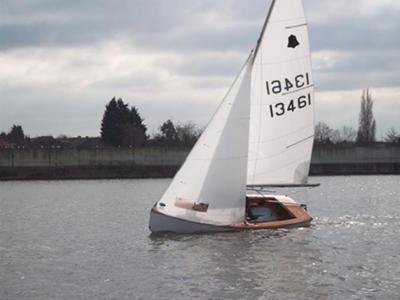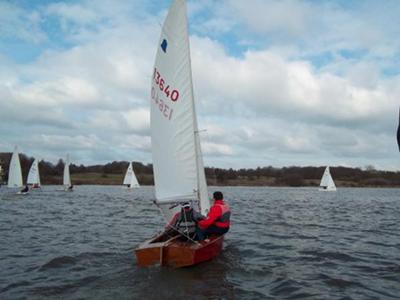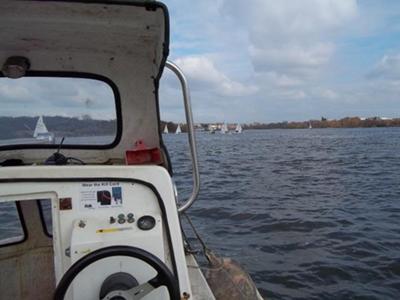Two Simple Actions That Can Massively Increase Your Boat Speed On The Beat
by Alex Dotsch
(London, UK)

Heeled Over Boat

Lots of Sail Twist

View from Committee Boat
Hello!
Welcome to the first post of my new Sailing Blog on StartedSailing.com
This is going to be a weekly or bi-weekly (or even more often if I have something more to say) journal in which I will be detailing my regular sailing endeavours, lessons learnt, top tips discovered and horrific crashes.
I race every Saturday and now that we are finally in the season of spring (Yes! No more cold weather!), I will be racing on Tuesdays as well.
Last series was the winter series, which I won for the first time in my 4 and a half years of sailing! I am very proud of myself and it shows that if you are persistent, you can achieve your goals.
I think I managed to finally win, because I was more focused (the previous series had been done in the middle of school work and exams; I am now on my gap year) and because I was fitter (I started going to the gym in June and started doing sailing related exercises – more on that in another post).
Anyway, today was the start of the spring series and Mark and I were OOD, which stands for Officer Of the Day and it is where you run the race. It was also the first time this year that we had three races (we usually have two in winter series) and is held at the later time of 1.30pm (compared to 1.00pm in the winter series).
Sometimes, it is a good idea to step back and watch other sailors to see what they are doing and how this is making them go faster (or slower).
Today I saw two big problems on the beating leg that I am going to share with you, which people at the back of fleet were doing and was detrimental to their speed.
1. Heeling Over
When most people are heeled over, they usually think they are going faster, which is actually a reasonable assumption, because a gust of wind will have hit the boat to make it heel over.
However when the boat heels over two speed reducing effects occur.
Firstly, the top of the sail has a greatly reduced wind area, which decreases the force hitting the sail and so your acceleration and speed become lower.
Secondly, heeling over causes the boat to slip on itself, because the effective centreboard area, which is providing an opposing moment to the wind and attempting to right the boat, is reduced. This causes the boat to move towards leeward, despite the boat pointing up into the wind.
Thirdly, the boat experiences weather helm, which is where the tiller feels heavy and is difficult to move. This is because it acts like an anchor, causes a massive amount of drag and slows the boat down.
The boat must be as flat as possible in order to stop these effects occurring and slowing your boat down.
You can flatten the boat by hiking out, pulling on kicker, pulling on cunningham and letting out mainsheet. Although as you will see below, this is another problem that I saw and so when the boat has flattened, pull the main all the way in again and repeat the process for each bout of heeling.
2. Sail Twist
A lot of the boats at the back of the fleet had a significant amount of sail twist in their sails. This is where the angle of the sail with respect to the wind changes as you go up the mast. At the bottom, the angle will be zero, but as you go up the mast it can be as much as 90 degrees (very bad!).
This creates a large amount of drag as the sail disrupts the lamina flow of the over the sail and the power of the sail will be reduced.
In order to lessen the sail twist, you must pull in the mainsheet as much as possible or pull on the kicker. This will pull down the boom and stretch the sail thereby removing the sail twist at the top of the sail.
So in conclusion, if you want to increase the speed of your boat on the beat, hike out to reduce heeling and pull your sail in to reduce sail twist.
Until next week!
Best regards,
Alex Dotsch
https://www.startedsailing.com


